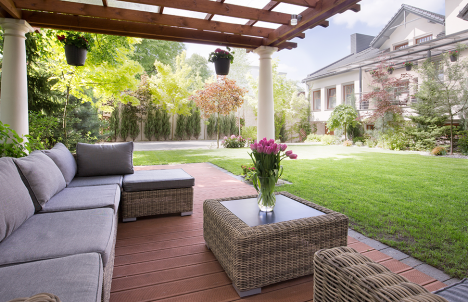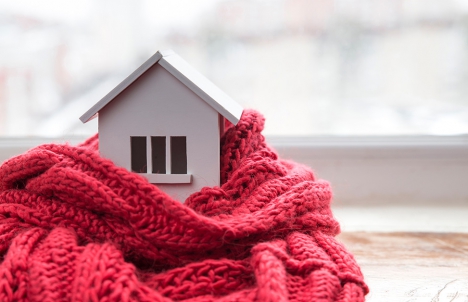Quality matters when hiring for a big project. Call a Five Star Rated professional now!
The forever home concept is new to recent generations who were raised to see starter homes as investment potential for future purchases. This perception has shifted as millennial home buyers rethink life in the 21st century given their own unique set of values.
As our population ages and remains active, many people want to spend their senior years in the homes they’ve raised families in and cherished for years. Making a life plan to support aging in place is increasingly popular because it provides choices for people who may need some care but want to remain independent.
When you are ready to find your forever home and you need remodeling advice or home improvement tips to prepare for your golden years, it’s a good idea to talk with a professional home remodeler.
Choosing a Forever Home
The forever home concept is new to recent generations who were raised to see starter homes as investment potential for future purchases. This perception has shifted as millennial home buyers rethink life in the 21st century given their own unique set of values. A forever home means you have a space to grow into and that transforms with you through the years. There are several reasons this is important:
- Quality of life: Working from home and commuting fewer miles appeals to first-time buyers. Finding a home in the right neighborhood and establishing roots means a better support system later in life.
- Economic benefits: The desire to pay off a mortgage and have security may allow younger generations to retire on time. They understand that saving for the future means a have a solid financial plan in the present.
- Permanent living space: Living in a forever home means stability. Millennials are forsaking transient lifestyles and appreciating permanent homes.

Conceptualizing a Forever Home
A professional home improvement contractor works with homeowners to develop a sustainable floorplan. Remodeling is necessary for many homes to improve accessibility and livability. Buyers have specific needs to consider after they purchase a new house. Universal design may offer the best of all worlds by creating a living concept that considers the needs of people at all stages of their lives.
Enjoying the freedom of aging in place means having room for the family. Multi-purpose rooms with open floor plans are popular, so people can move about freely. Large outdoor spaces with entertainment areas are on many wish lists. They offer the freedom to enjoy nature without the necessity to travel anywhere. In your senior years, this becomes an increasingly important consideration. A combination of indoor and outdoor living is a great advantage as people have access to both environments at once. It provides more square footage, and it’s cost-effective.
You should hire a knowledgeable contractor to make upgrades that meet your needs for a lifetime. Forever homes require forethought about mobility issues and aesthetic qualities. One of the characteristics of forever homes is they don’t need continual renovations over the years. The basic design works, and small updates are made to incorporate modern conveniences.

Remodeling a Forever Home
Forever homes are designed with the future in mind, so risk areas should be addressed. Getting the design right in these areas will make life easier both now and in the future.
Kitchens
Floors are an important safety concern in kitchens. Select from slip-resistant options and pick colors that stand the test of time. Keep cabinets at a reachable level and avoid built-in appliances that are not easy to replace. It is important to have plenty of space to move around. Floor plans with large passing areas are great for younger families and for seniors who need assistive devices to walk.
Doorways
Doorways need thresholds that are level to the ground. All family members must be able to enter the home safely. An extra-wide space of about 36 inches is sufficient for wheelchair access and helps when you move bulky items, such as furniture and appliances.
Stairwells
The width and steepness of staircases is an important accommodation for any home. Stairwells are not simple retrofits. It is crucial to make stairwell changes during a remodel.
Garages
An attached garage is a must for forever homes. Regions with inclement weather are big safety concerns for elderly persons. Additionally, a multi-car garage is handy for the extra room to store items that increase clutter inside a home.
Bathrooms
Walk-in tubs and showers reduce slip and fall risks. A master bath and guest baths are helpful to accommodate larger families.
Bedrooms
Larger-sized bedrooms are great, so develop a floorplan that gives the ability to expand existing spaces. As you age, it is important to have at least one downstairs bedroom for individuals who can’t climb stairs.
Lighting
Lights might not come immediately to mind on your aging in place needs list. However, well-lit homes are safer homes. Check to see that there is ample lighting throughout your house. Task lights in kitchen areas and bathrooms are beneficial, and brighter hallway lights are essential.

Before you plan a remodel, get quality referrals for home service providers in your area. You want your unique desires and requirements met, so ask for assistance in finding a company that’s right for you.
Aging in Your Own Place
According to the CDC, “aging in place” means that a person has the capability to stay in his or her house and community and live comfortably and independently, regardless of physical or mental ability, age or income level. The best part about a forever home is that it is suitable for all people of all ages. Mobility is always an issue, and homes that are intended for aging in place check all the categories for efficiency and safety. They also directly benefit a person’s quality of life. Having a sense of community, being near family and remaining independent are all key factors in promoting health and longevity.
Our companies are backed by the Five Star Guarantee. Call one today!













 Top Categories
Top Categories












